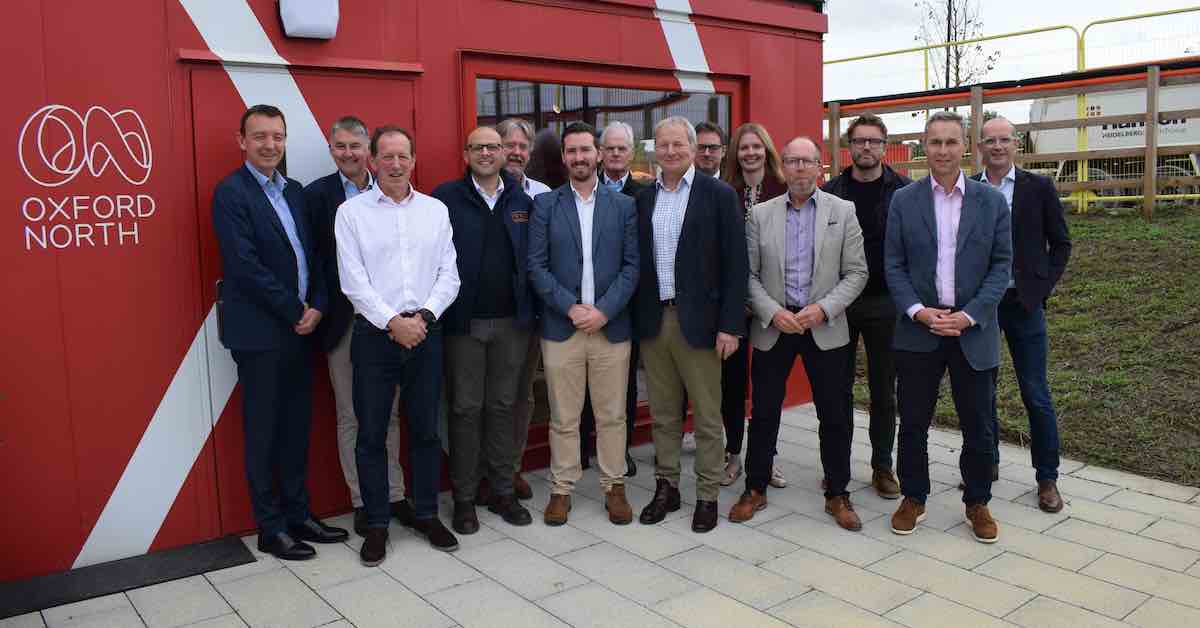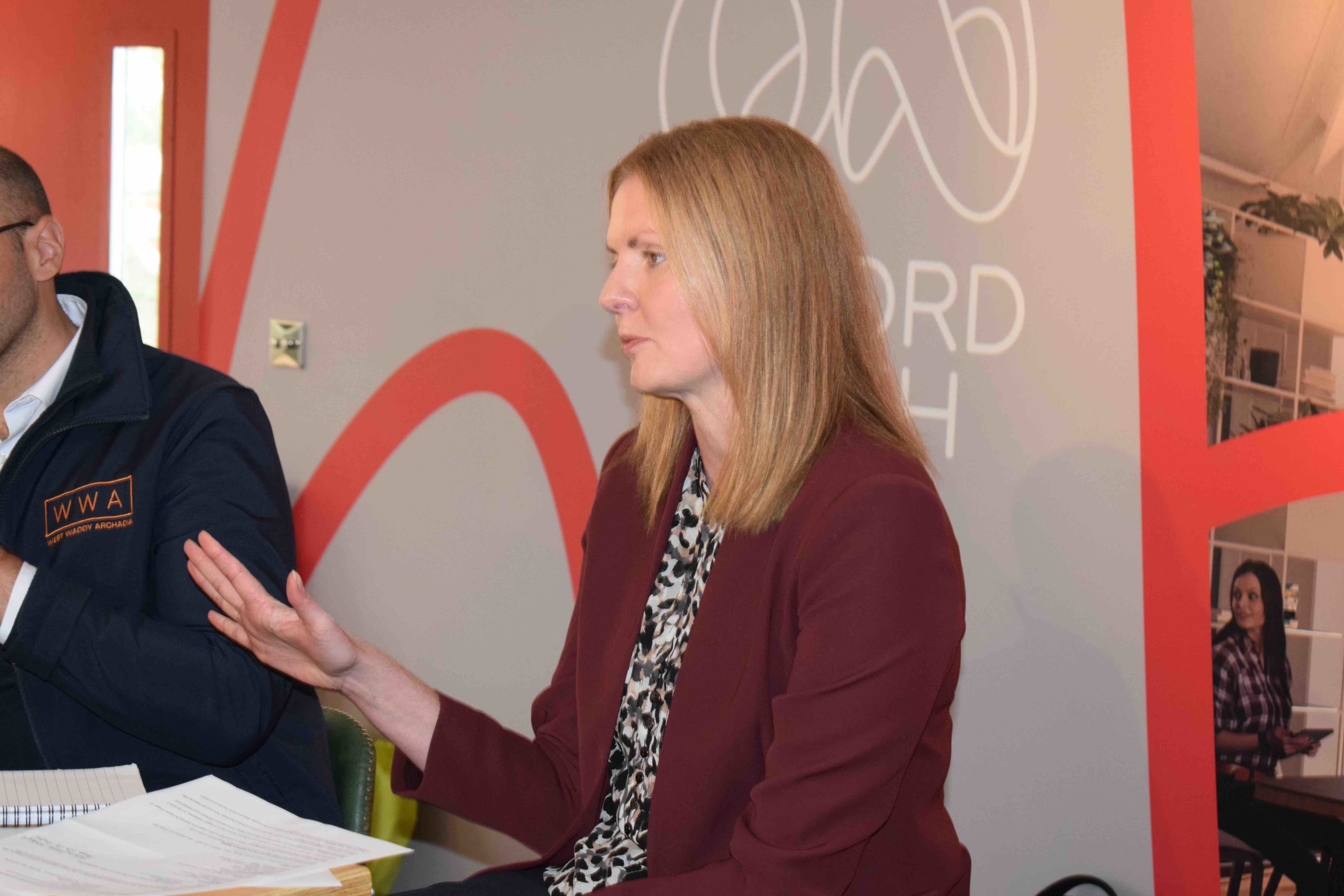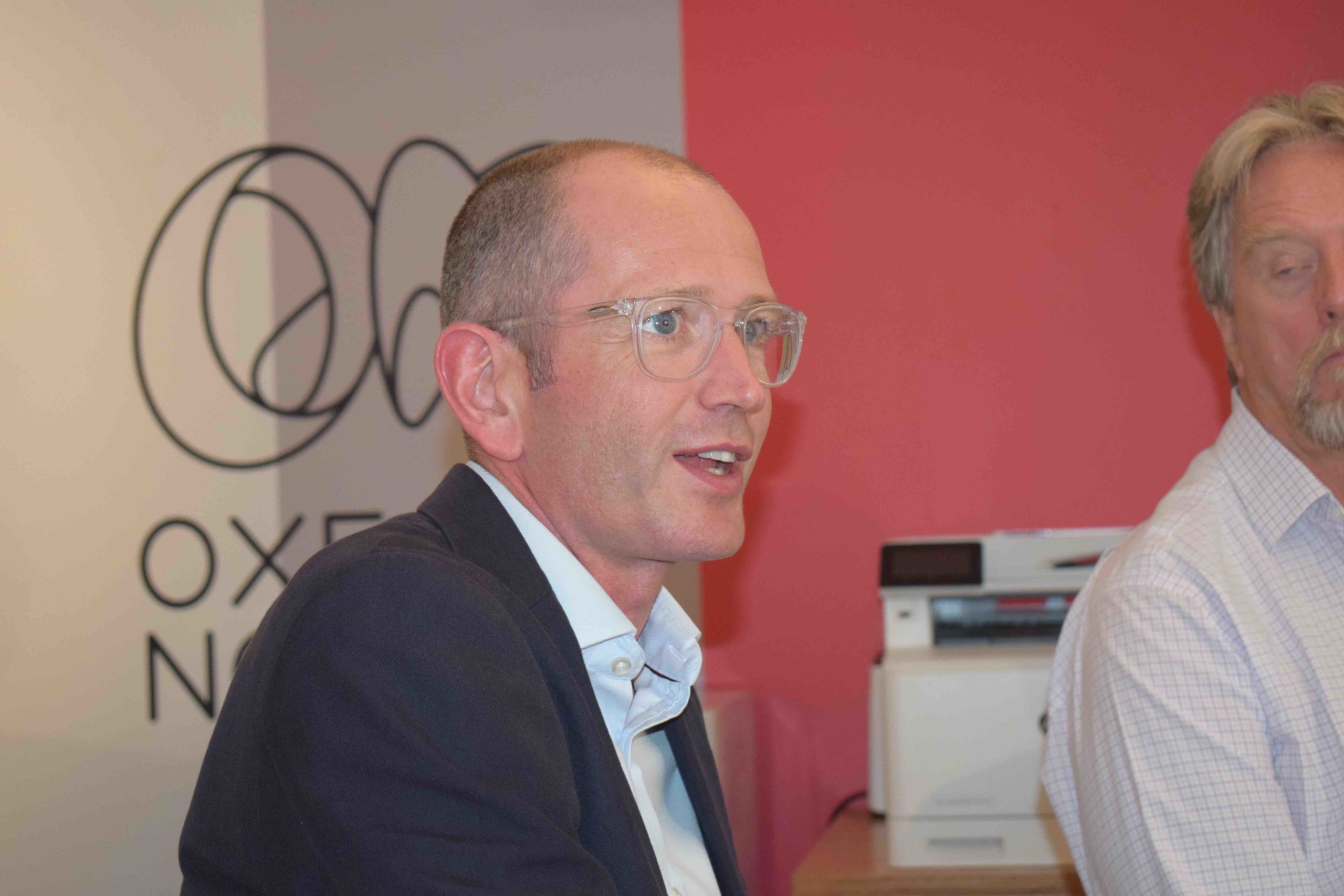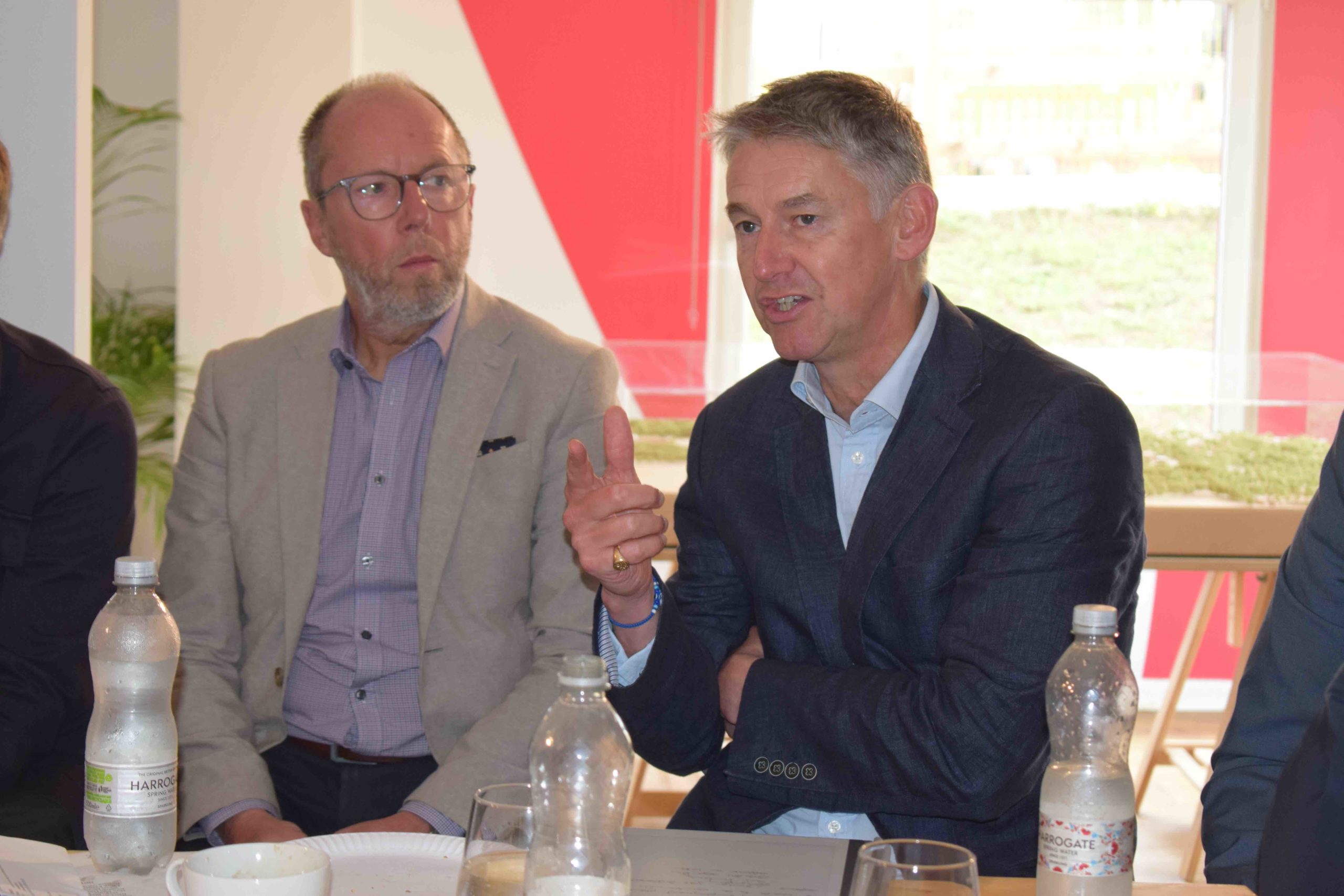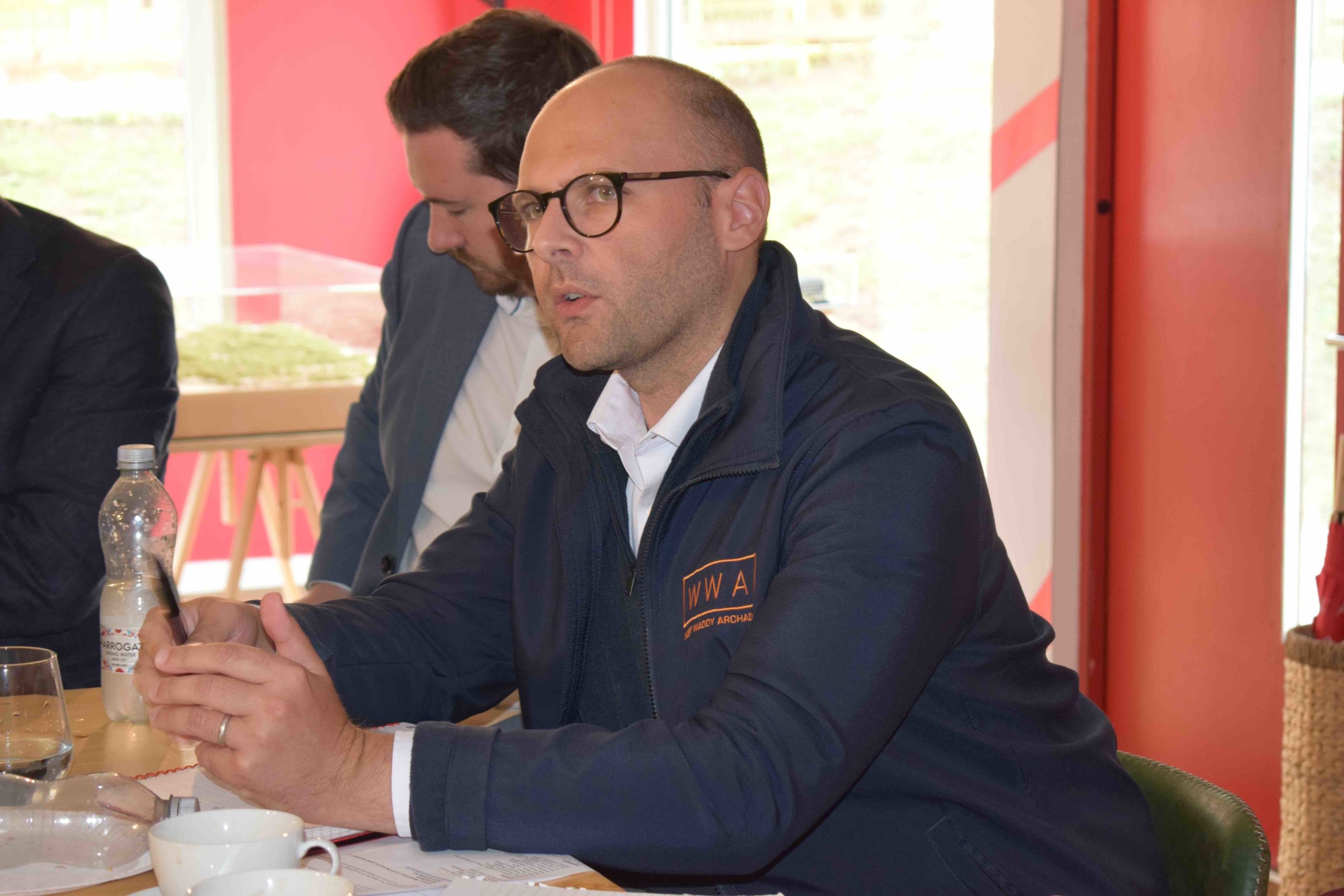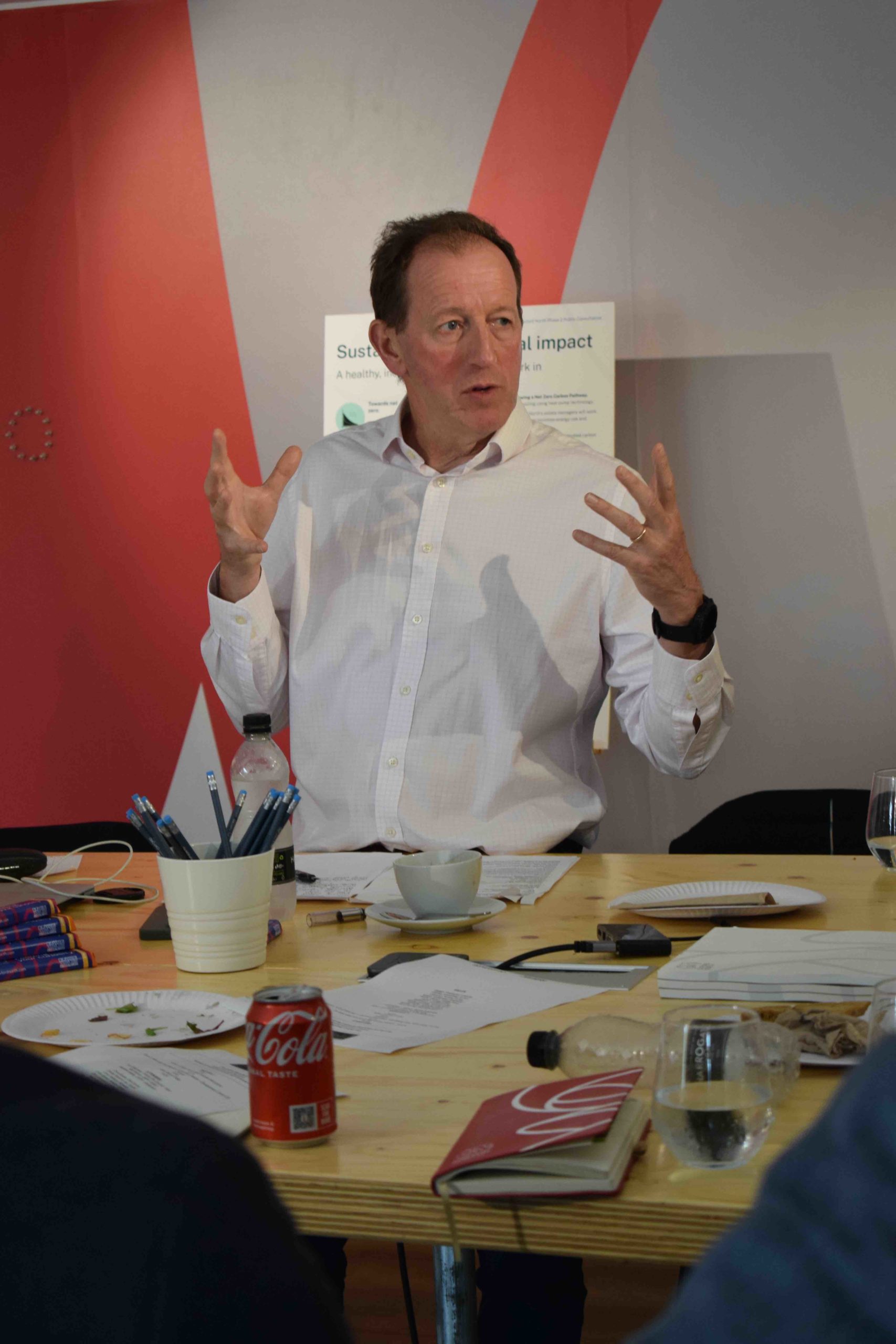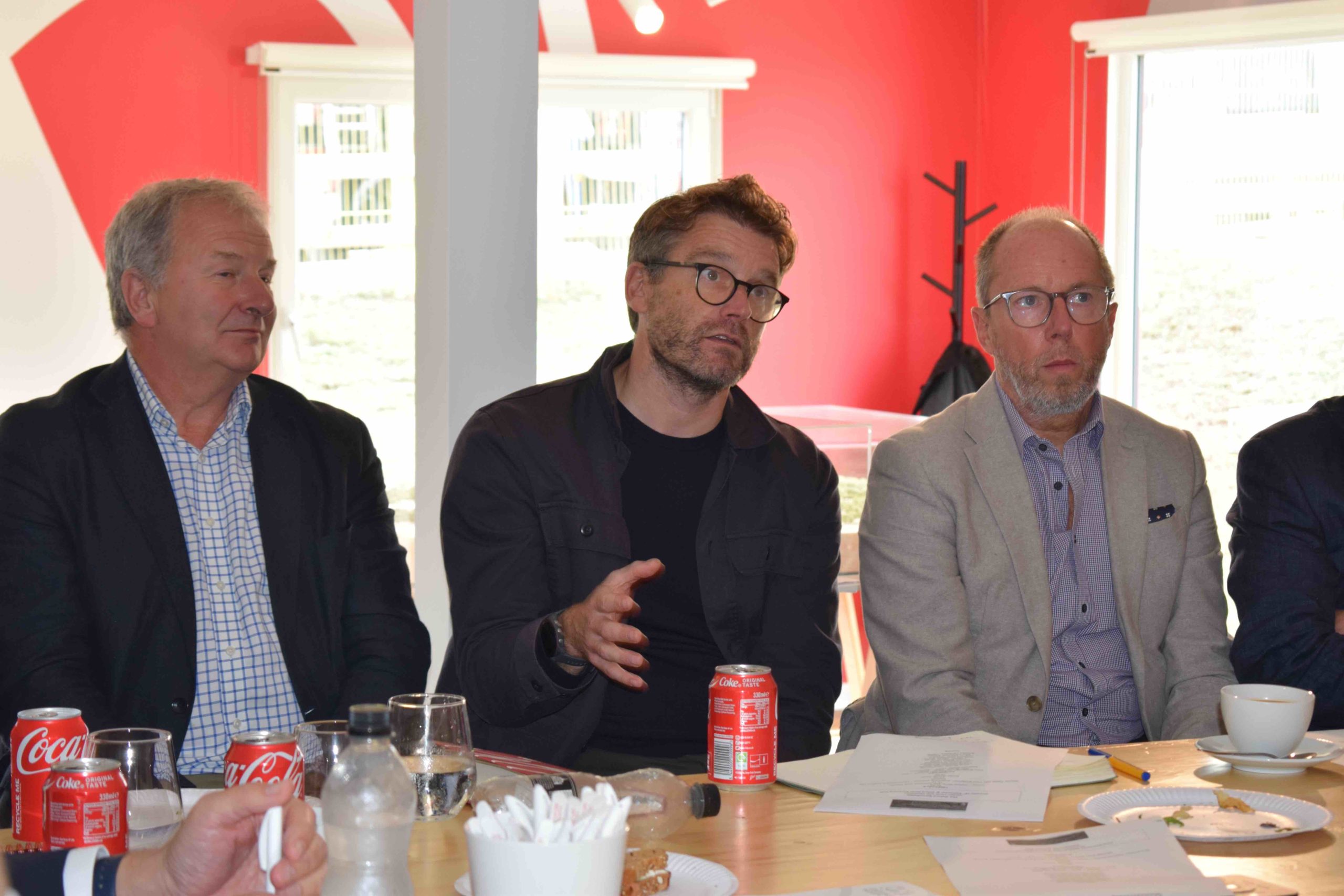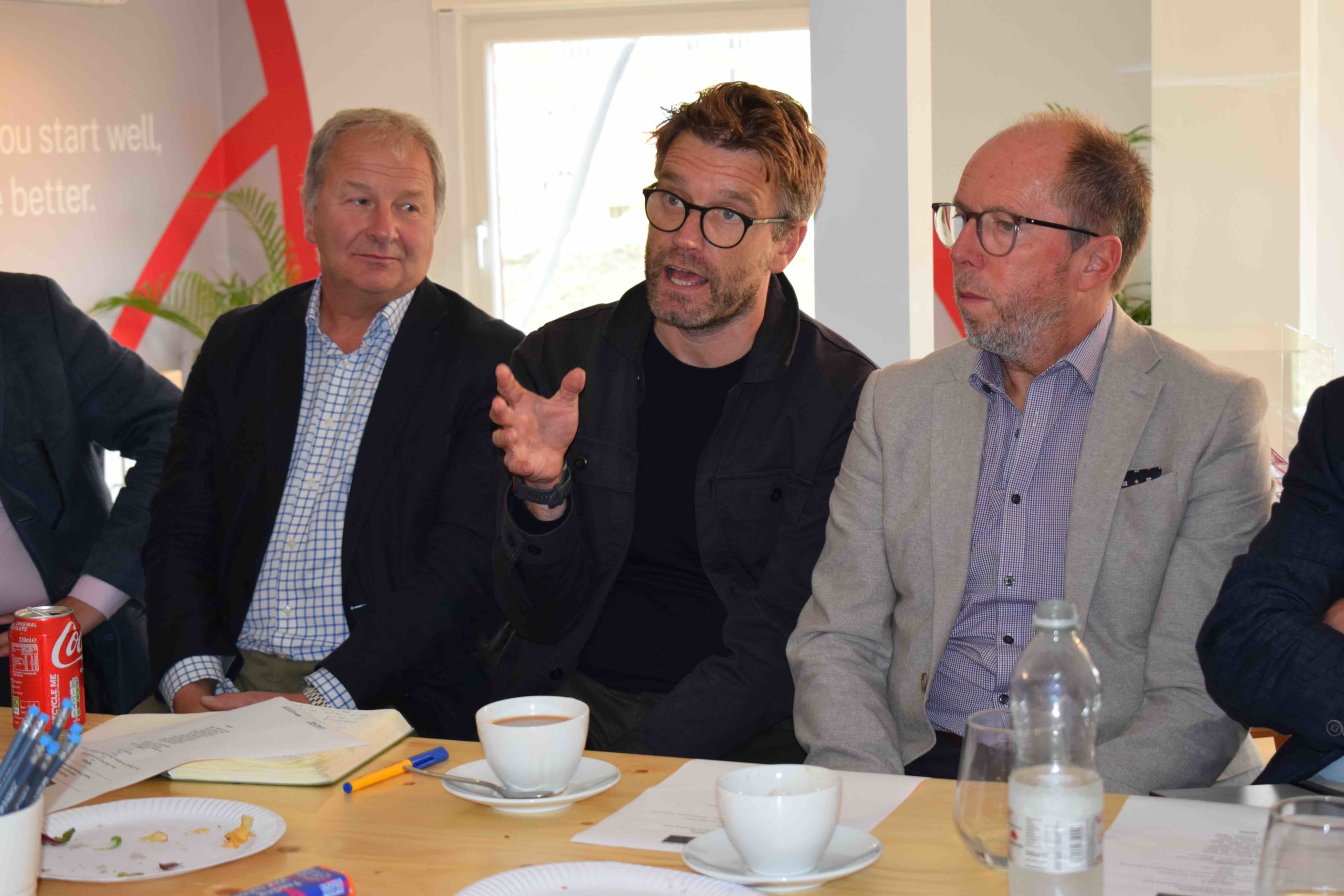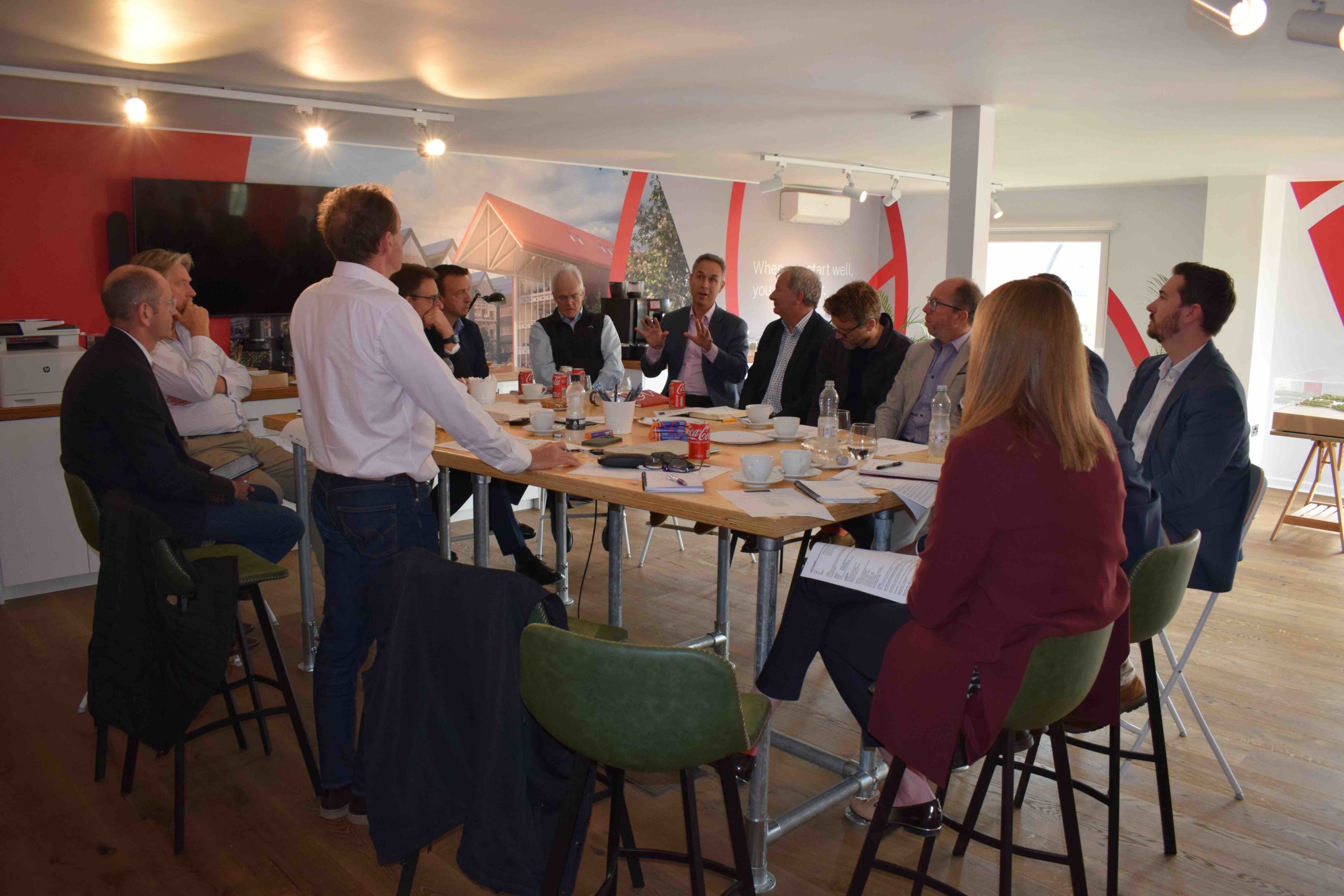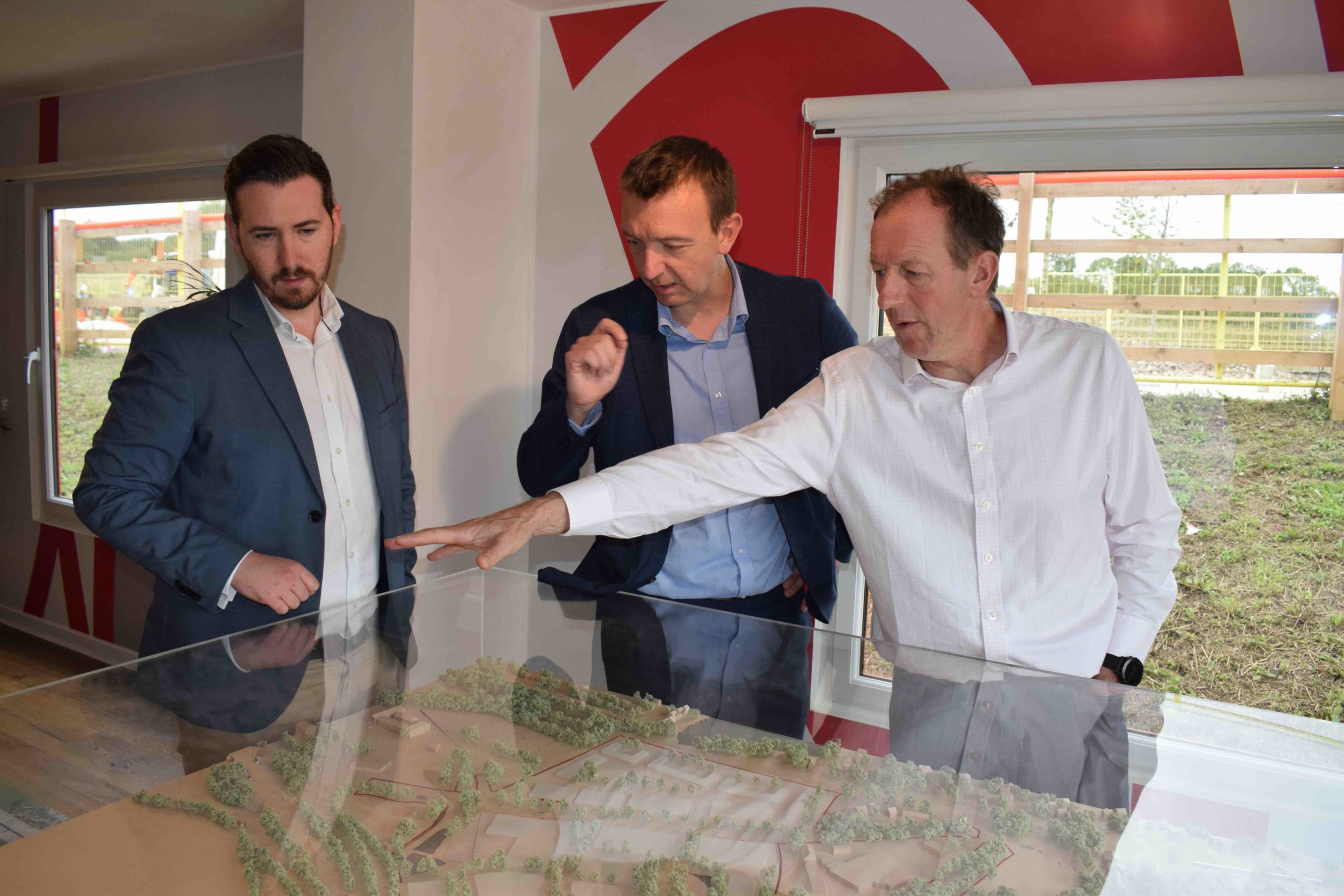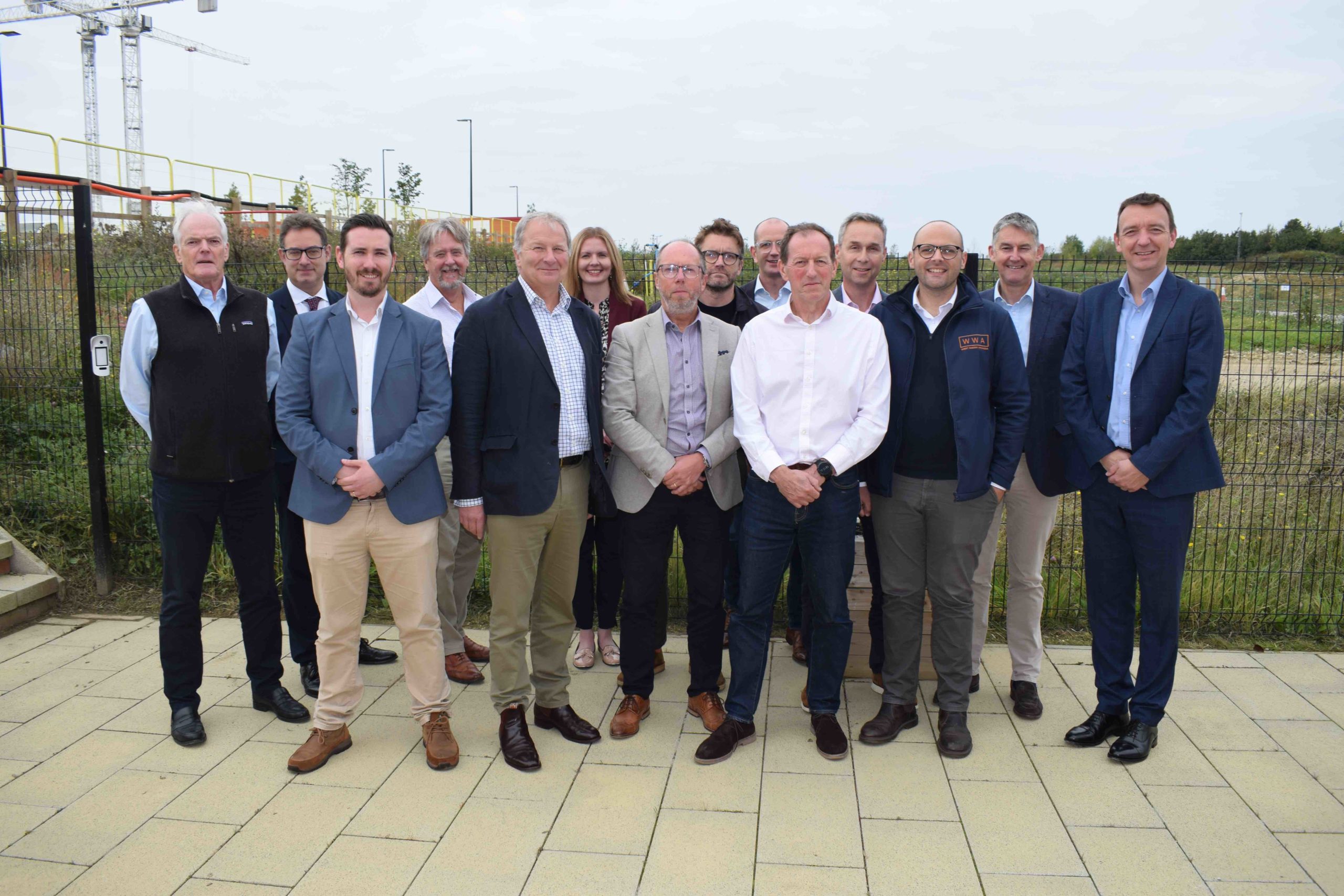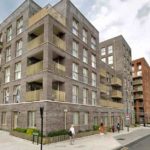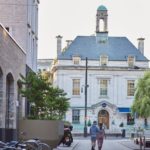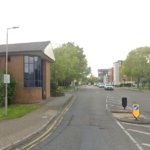DevComms partnered with UK Property Forums to bring developers together with a range of professionals including from the worlds of architecture, planning and transport for a leadership lunch at the marketing suite of Oxford North to debate Oxford, its development profile, transport network and its future.
Three major developments in Oxford demonstrate an alternative to the traditional business park model, delegates heard at the latest UKPF round table event.
The event, chaired by UKPF managing director Matthew Battle (pictured third from left), heard from leading figures from Oxford North, where 450 homes, 936,000 sq ft of commercial space along with public realm including 12 acres of parkland, is being created; Oxpens, where a major mixed-use scheme is planned in the city centre, and from developer Mission Street which is developing laboratory space at Botley Road as well as in Cambridge.
All three schemes aim to be integrated with their communities and largely different from the traditional business parks model.
Charles Rowton-Lee, head of commercial agency for Savills which acts for Oxford North developer Thomas White Oxford (TWO), described that scheme as a ‘science and tech, urban environment’.
He said: “Because we’ve got a lot of residential and we are going to have a lot of commercial as well, it’s going to be a really vibrant environment.
“A million sq ft will create many jobs, 450 residential units will have a lot of residents so this isn’t a sort of 9am – 5.30pm economy, it’s a 24/7 economy – very easy to say but it will be.
“What we have seen and what we do see in our economy is very small companies growing to become large companies, some exponentially, and this environment, like others, will give them that opportunity to grow.”
Tom Bridgman, executive director development for Oxford City Council, said Oxford North is an example of the direction the city needs to go.
He said: “If you think about the other business parks and science parks in Oxford, they’ve turned their backs on the communities that they sit within. They are like giant 1990s spaceships that just landed.
“What both ARC (Oxford) and the science park are now doing is retrofitting, trying to create the amenity and connectivity in the work they are pushing forward and we will support that and encourage it.
“Oxford North has that same kind of context on the edge of the city but what it’s trying to do is be part of that city. That’s fundamental to where big developments in Oxford need to be.”
William Donger, director of TWO which had worked with the city council from the start, said: “We’ve been going to America, going and seeing what everybody else does. We spent some time in Cambridge as well to have a look at what they did because they were well ahead of us.
“Now I think we are stepping up. And I think we will get a lot of other schemes to step up and meet the vision the city has. I think it’s very impressive what has happened in the last 15-20 years. I’m very optimistic.”
Mr Rowton-Lee said one of the first questions he faces from large companies interested in taking space is ‘where will my staff live and work?’
He added: “When we talk to them about Oxford North, the beauty is they can work here and they can live either side of it, very close.
“And there have been some very encouraging conversations with occupiers who have asked how many units they could buy, because their experience in the US and elsewhere is that some of their younger staff need help to find accommodation.”
Colin Brown, director development for Mission Street, warned of the danger of property people being self-interested when talking of ecosystems created within their developments.
He said: “We don’t create ecosystems, we facilitate ecosystems and we play a part in something that is much bigger than what we do. In the same way, making place, when you’re dealing with being part of a city, when you’re making or curating community, we are a little bit self-important sometimes.”
Mission Street’s proposed Spires II building was praised for its public accessibility, a feature of all Mission Street’s developments.
Mr Brown said: “Our big thing is we always say we never want to have a secure line outside the building. In everything we do, our secure line will be well inside the building so we will be able to invite people in.
“But there’s also this idea of an invisible threshold. If people don’t feel invited, then it doesn’t matter if there’s a barbed wire fence or not, you’re not going to get the community coming into and through your site.”
Placemaking involves softer considerations, he said. Previously an amenity building would suffice for business parks but a more collaborative approach from developers would, he argued, be more creative.
“Often the challenge in Cambridge is, as a collective of developers and investors in this world, could you not pool your resources and do something that is properly game-changing for the city?
“And if you can, can you not find something where you can play your part in what you want to make happen?
“In Cambridge for example, we are working very hard to look at how we can really build visual and creative arts, and interface that with the science and research community so that we can use visual and creative arts and have artists in residence for the duration of the development and beyond.”
Kevin Minns, managing director of Oxpens developer OxWED, outlined the similarities and differences between Oxford North and Oxpens.
“We are very definitely a city centre site. We are really building on land that frankly should have been built on 30-40 years ago.
“It’s old railway goods land and, like a lot of places around the country, it’s been left for decades. And OxWED’s real mission from the start is to make it happen.”
Oxpens, he said, has to fit in with the city centre.
“It’s how we create a new piece of city which is very different to what William (Donger) is doing here and yet many things we’ve talked about are exactly the same.
“We are very much a mixed development. We are anchored like you are here with parkland, with what I call the Oxpens amphitheatre, it’s absolutely beautiful.”
He believes the Oxpens scheme would not have happened in previous decades.
He went on: “There just wasn’t the will to do that sort of development there and it’s taken new thinking. Tom (Bridgman) and his team asked us to think about it in a different way that is about the pieces of the jigsaw coming together.”
The proposed scheme, soon to go before councillors, is designed to complement the current city centre and fits around recent developments including the Westgate shopping centre and complies with current thinking on car use.
Mr Minns said: “We don’t have any parking other than blue badge parking. We are 100 per cent reliant on walking, cycling, train, bus and park and ride.
“That simply wouldn’t have been possible when it was all about people driving to their offices and parking outside the front door, which is where the business park originated from.
“That’s one of the reasons they (business parks) did turn their backs on Oxford, because they were dominated by the car. Ours is quite the opposite so we hopefully succeed because of that different approach.”
However, the mix of uses drew criticisms from locals who wanted more housing.
Mr Minns said: “We did have quite a few people trot out ‘you should just cover it with social housing’, ‘why are you building market housing let alone commercial space, let alone a hotel?’ – all of that sort of argument.
“Of course, when you consult it’s the people that not always are in favour of it that come to those events.
“But when you actually speak to people and put it in context of the importance of Oxford’s historic innovation, that did us no harm because people could actually see what benefit comes from it for the UK and globally.”
After three and a half years of planning he hopes the city council’s planning committee will consider the plans in October.
The Botley Road developments where Mission Street is replacing retail warehouses with science buildings was welcomed by Mr Bridgman although he confessed it had not been intended.
He said: “The Botley Road development was not conceived as part of the West End but actually it’s perfect.
“It’s current usage is out-of-town retail – in town. It came about because it’s in a flood zone but given the opportunity now, which has come about because of the way the market is, it’s the perfect site for what Mission Street are doing.”
Developments at Oxford West End, said Mr Bridgman, are huge but another development area – Headington – will prove to be similarly significant.
“It’s largely being led by the university. The Old Road campus, Churchill (Hospital), some huge stuff happening there largely led by the university and the trust but nonetheless it’s going to be huge.”
The meeting went on to discuss heights, densities and quality of buildings in Oxford and then the controversial issue of transport in the city.
Image top and front of gallery below (l-r): Paul Vicary, director for DevComms; Richard Venables, senior director for CBRE; Matthew Battle, managing director for UK Property Forums; Jonathan Headland, urban design director for WWA Studios; Hugh Blaza, consultant for UK Property Forums; Charles Bushe, group commercial director for DevComms; William Donger, director for Thomas White Oxford; Charles Rowton-Lee, head of commercial agency and director for Savills Oxford; Dan Lampard, senior director and head of Thames Valley for Lichfields; Laura Fitzgerald, director for Motion; Huw Mellor, partner for Carter Jonas; Tom Bridgman, executive director development for Oxford City Council, Kevin Minns, managing director for OxWED and Colin Brown, director development for Mission Street.
© Thames Tap (powered by ukpropertyforums.com).
Sign up to receive our weekly free journal, The Forum here.






